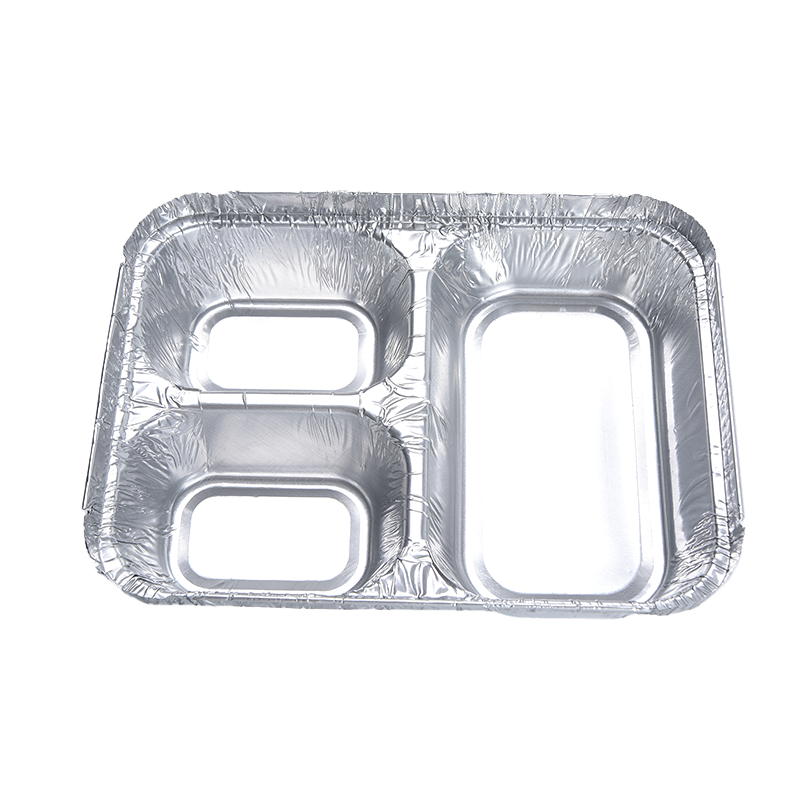can you put aluminum foil in the oven?
Industry News-Aluminum foil containers are a kitchen essential for freezing, catering, and baking. The answer to whether they can go in the oven is Yes, absolutely!
However, safe and effective use requires understanding a few crucial rules. Follow this definitive guide to ensure excellent cooking results and maximum safety.
Content
1. Temperature & Material Guidelines
Aluminum is highly heat-resistant, making it perfect for conventional oven use.
-
Safe Temperature Range: Standard aluminum foil containers are safe for oven temperatures typically up to $450^{\circ}F$ ($232^{\circ}C$). This covers the vast majority of baking, roasting, and reheating recipes.
-
Melting Point: Aluminum's true melting point is far higher ($1,221^{\circ}F$ or $660^{\circ}C$), meaning a home oven cannot melt the container. The temperature limit is mainly a guideline for preserving the container's shape and structural integrity.
-
Opt for Heavy-Duty: For heavy dishes (like large casseroles) or baking at higher temperatures (above $400^{\circ}F$), always select heavy-duty or extra-thick containers to prevent warping or bending.
2. The Critical Lid Rule: Protect Against Melting
The lids that come with most foil containers are designed for storage, not cooking. Always remove non-oven-safe lids before placing the container in the oven.
-
Plastic/Cardboard Lids: These lids will melt, burn, or release fumes. They must be removed and discarded (or saved for storage) prior to baking.
-
Foil Lids: While an all-aluminum foil lidcanbe used, it's often better to tent the food loosely with a fresh piece of aluminum foil. This helps trap moisture without creating a tight seal that might cause steam to build up excessively.
3. Best Practices for Placement and Stability
Proper placement in the oven is key to preventing spills and ensuring even cooking.
-
Use a Baking Sheet: Filled aluminum containers can be flexible. To ensure stability and prevent spills when moving the dish, always place the foil container on a rigid baking sheet or cookie pan before placing it on the oven rack.
-
Avoid Heating Elements: NEVER place the container directly on the floor of the oven, particularly in gas or electric models. This can block heat circulation, potentially damage the oven's heating element, and may pose a fire risk. Use the middle or upper oven rack.
4. Managing Acidic & Salty Foods
While safe for short-term cooking, be mindful of prolonged contact with certain foods.
-
Potential Reaction: Highly acidic foods (e.g., tomato sauce, citrus, vinegar) or very salty foods can cause a minimal amount of aluminum to leach into the food over long cooking periods (several hours).
-
Mitigation Strategy: For recipes requiring extended baking of acidic dishes, consider lining the foil container with parchment paper first. This creates a barrier between the food and the aluminum surface.
5. Core Benefits for Independent Food Businesses
For catering, meal prep, and food delivery, aluminum foil containers offer unmatched convenience:
| Feature | Advantage for Business/Home Use |
| Freezer-to-Oven | Easily move food directly from cold storage to a preheated oven for reheating. |
| Even Heat Transfer | Aluminum conducts heat efficiently, ensuring casseroles and baked goods cook consistently. |
| Portion Control | Available in diverse sizes, perfect for single-serve meals, family dinners, or catering trays. |
| Recyclability | 100% recyclable, making them an environmentally friendlier disposable option than most plastics. |





 English
English 日本語
日本語 عربى
عربى Español
Español












